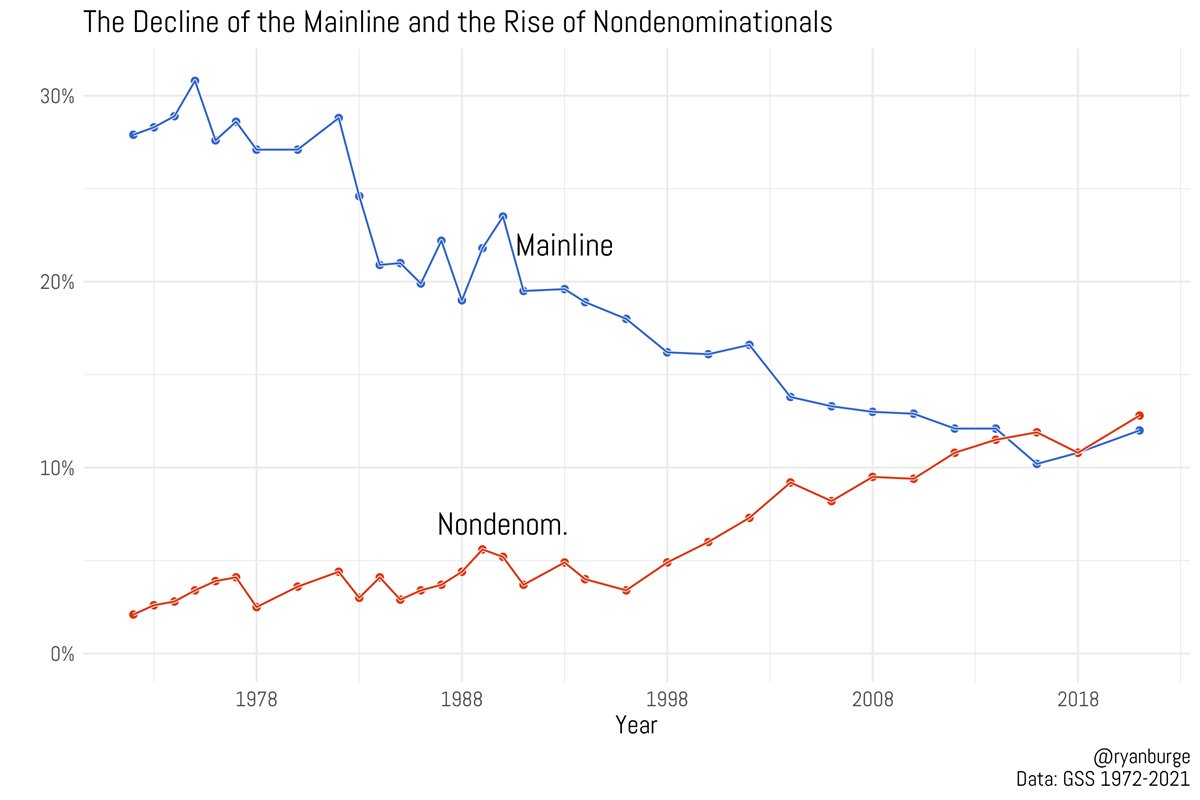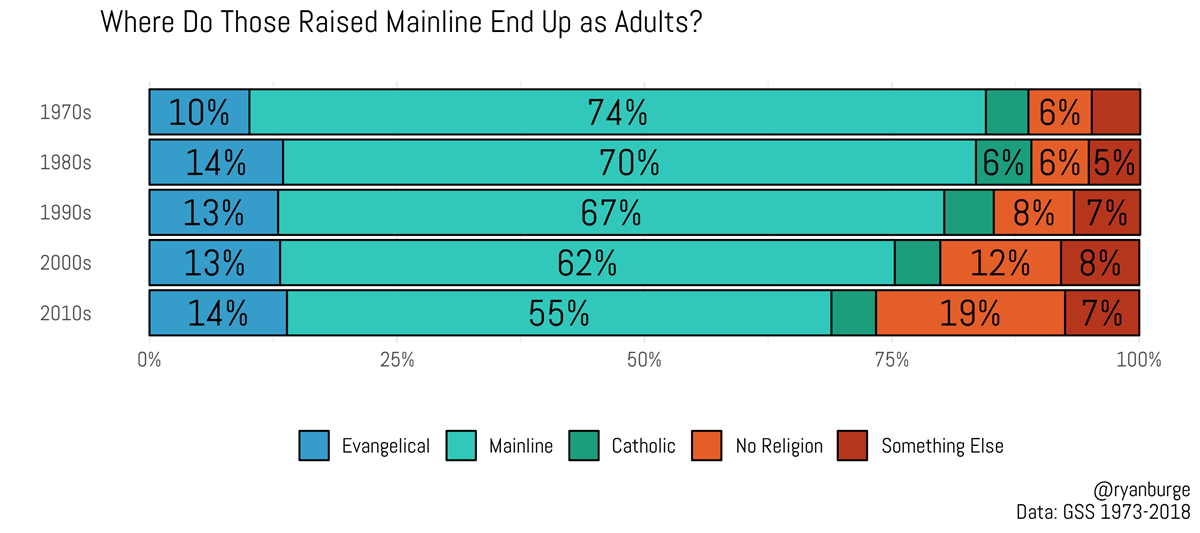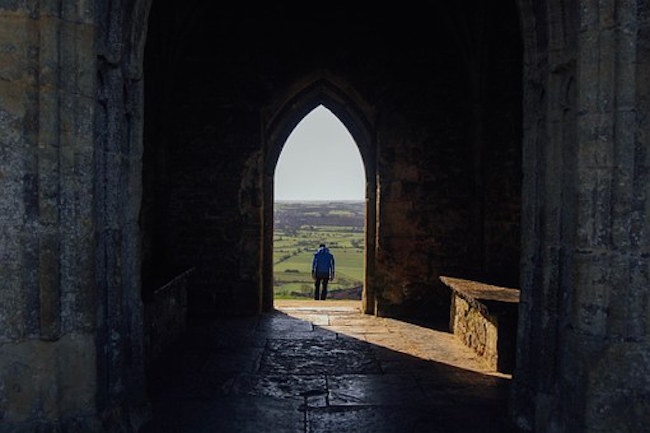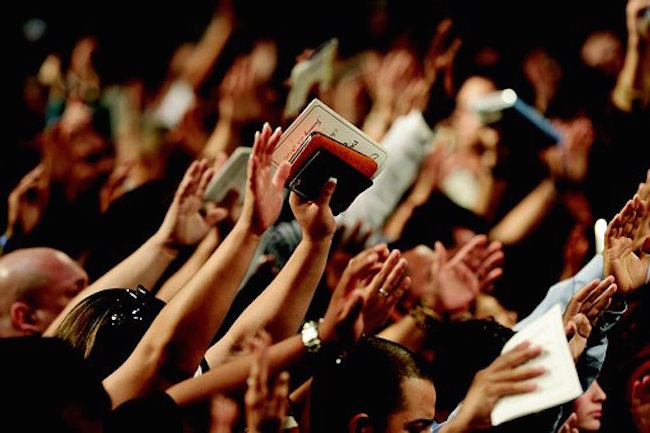Nondenominational Churches Are Adding Millions of Members. Where Are They Coming From? by Ryan P. Burge for Christianity Today
It’s not mainline traditions anymore.
ver the last decade Baptists, Methodists, Lutherans, Presbyterians, and every other Protestant family has declined except for those who say they are nondenominational.
The 2020 US Religion Census, due out later this year, tallied 4,000 more nondenominational churches than in 2010, and nondenominational church attendance rose by 6.5 million during that time.
At the same time, mainline Protestant Christianity is collapsing following five decades of declines. In the mid-1970s, nearly a third of Americans were affiliated with denominations like the United Methodist Church, the United Church of Christ, and the Episcopal Church. But now, just one in ten Americans are part of the mainline tradition.
In 2021, nondenominational Protestants in the United States outnumbered mainline Protestants. But what is causing this tremendous shift in the church landscape?

In the General Social Survey, Americans are asked about the religion they were raised in and then their current tradition. Mainline traditions have struggled for decades to retain believers born into their churches. In the 1970s, about three-quarters of those raised mainline would still belong to mainline churches as adults. In the 2010s, the share who stayed mainline had declined to just over half (55%).

Of the 45 percent of the mainline who leave, some end up in evangelical congregations; however, the evangelical share did not increase between the 1980s and the 2010s. Instead, the bigger story is that the portion of those who leave the mainline and become a religious “none”—claiming no faith or no tradition in particular—has tripled since the 1970s, from 6 percent to nearly 20 percent in the most recent data. Thus, there’s not a lot of evidence that the rise of nondenominationals is being directly fueled by the decline of the mainline.




